Rosé: Domaine Tempier 2018 – Pairing Rating: 9.5 out of 10.0
Cru Beaujolais: Jean Foillard Fleurie 2015 – Pairing Rating: 9.0
To the uninitiated, Cacio e Pepe sounds like a yawner: “It’s just pasta, cheese and pepper!” “Unimaginative”, they cry. But we think they miss the point: the highest quality ingredients, expertly prepared and combined, usually show best when few in number. Think Caprese Salad or a Cheese Omelet, where the amazement is totally dependent on the freshness of a few ingredients, the quality of the execution, and the simplicity of the recipe. Such is the case with Cacio e Pepe.
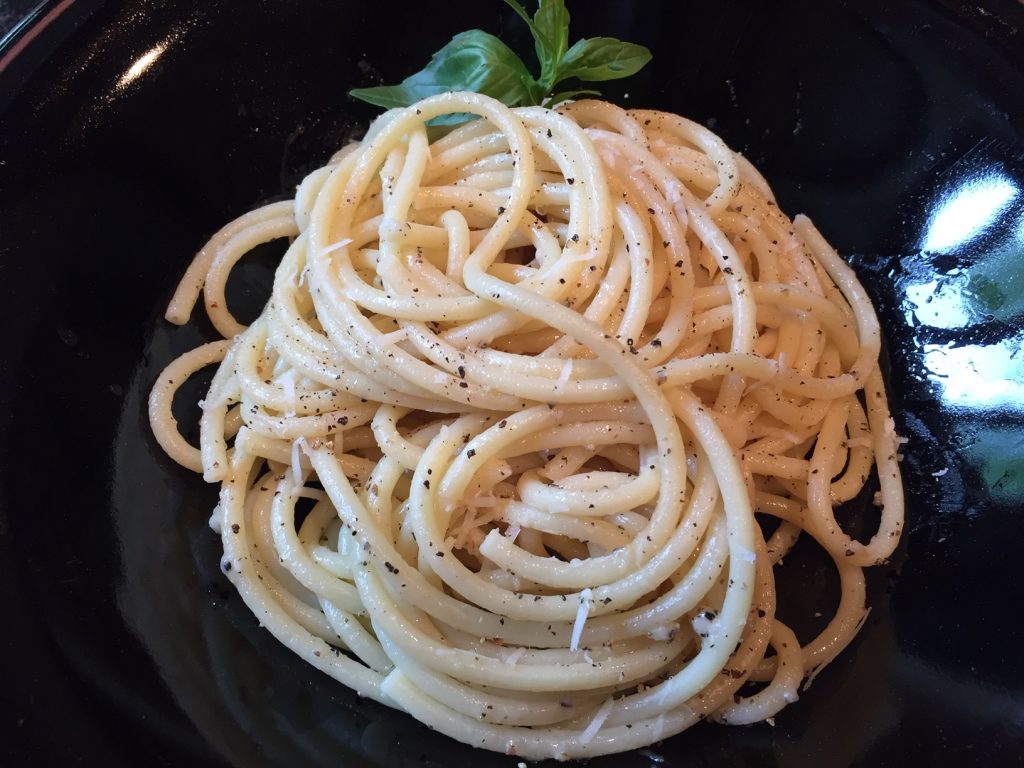
One might think that Cacio e Pepe (literally “Cheese and Pepper”) is an ancient Italian pasta dish born in Emilia-Romagna or Lombardy. Not so. The dish is said to be from “relatively” modern Roman cuisine. And because the ingredients keep well for a long time, the dish was a practical recipe for nomadic shepherds.
Interesting how a simple dish for shepherds has become the darling of gourmands and Italian chefs! Reminds us of the renewed interest in Gnocchi and Gourmet Flatbreads.
“Simple”, however, belies the execution precision this dish demands. Think of baking – where measurement of the ingredients is critical. Cacio e Pepe requires similar care. Consider the grated cheese: it should be aged Pecorino Romano, not Parmigiano Reggiano. Save that for Fettuccini Alfredo. The hand-grating should be fine, as depicted below, but not powdery. A large grate will leave the cheese lumpy amidst the pasta; pre-ground, grocery store cheese is typically too fine and will melt too quickly.
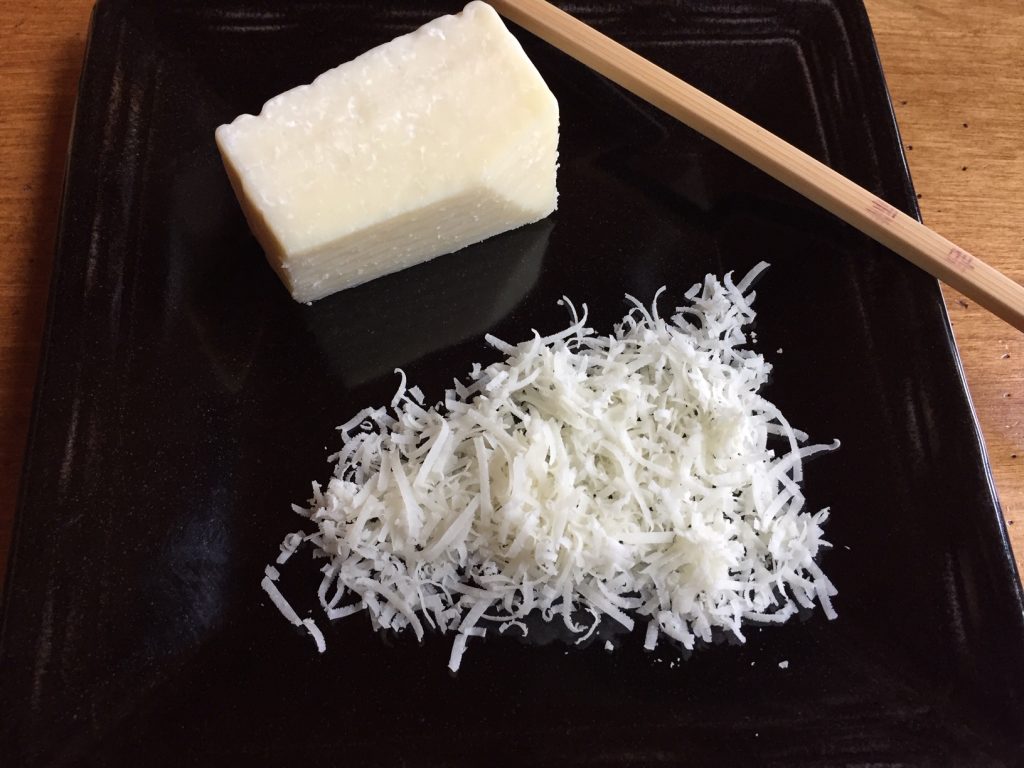
Second, the black pepper must be freshly ground and medium-sized in texture. Finally, the traditional recommended pasta depends on the region in Italy: Spaghetti alla Chitarra (Abruzzo) or Tonnarelli (Lazio). Both are about the size of spaghetti and are textured to improve the capture of the cheese. But both are a challenge to find in dried form in US markets. We did, however, find the one pictured below at our local Whole Foods.
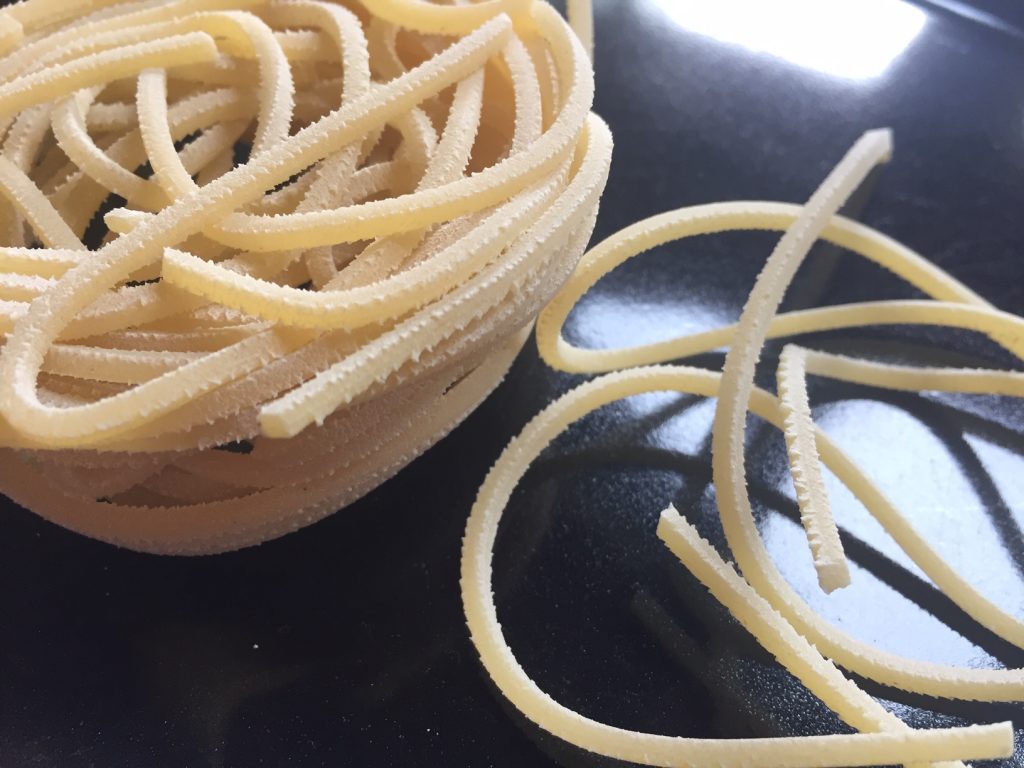
If you are unable to find the Chitarra, we recommend the dried pasta from DeCecco for its toothiness when cooked al dente. We have tried both spaghetti and linguini cuts, but our preference is to use bucatini.
Purists’ commentaries abound on Cacio e Pepe recipe sites: no butter, no cream, no olive oil . . . only cheese, pepper and starchy pasta water. We believe we can make a superior dish if we use a little butter and a little heavy cream . . . superior in the distribution and texture of the cheese. We’ll take the abuse from the purists, for it’s the quality of the finished product that matters. Our recipe is provided below, and we think it hits all the right notes.
Wine Pairing:
In making a wine selection for this dish, the focal points are the creaminess of the cheese and the heat of the black pepper. As such, we thought that a Rosé that would deliver enough acidity to cleanse the dairy fat, while the ripe red fruits (and no tannin) would keep the pepper in check. But with Rosés made in wine regions all over the world, how does one choose?
The French have a way to think about Rosés, pouring them in two categories: Vins de Soif (thirst-quenching wines) and Vins de Gastronomie (wines for food). The first category is made up of Rosés that are light-bodied, crisp, refreshing wines intended to be enjoyed as aperitifs. They are typically unoaked blends of Cinsault and Grenache. The second encompasses fuller-bodied, bolder, more structured Rosés meant to be enjoyed with food.
Our go-to Rosé for food is from Domaine Tempier (our visit) located in the Bandol appellation of Provence. Here, the hillsides of Mourvèdre grapevines bask in the long, hot, growing season of the Mediterranean coast. Adding the Mourvèdre grape to the Rosé blend gives the structure needed to be a Vins de Gastronomie.
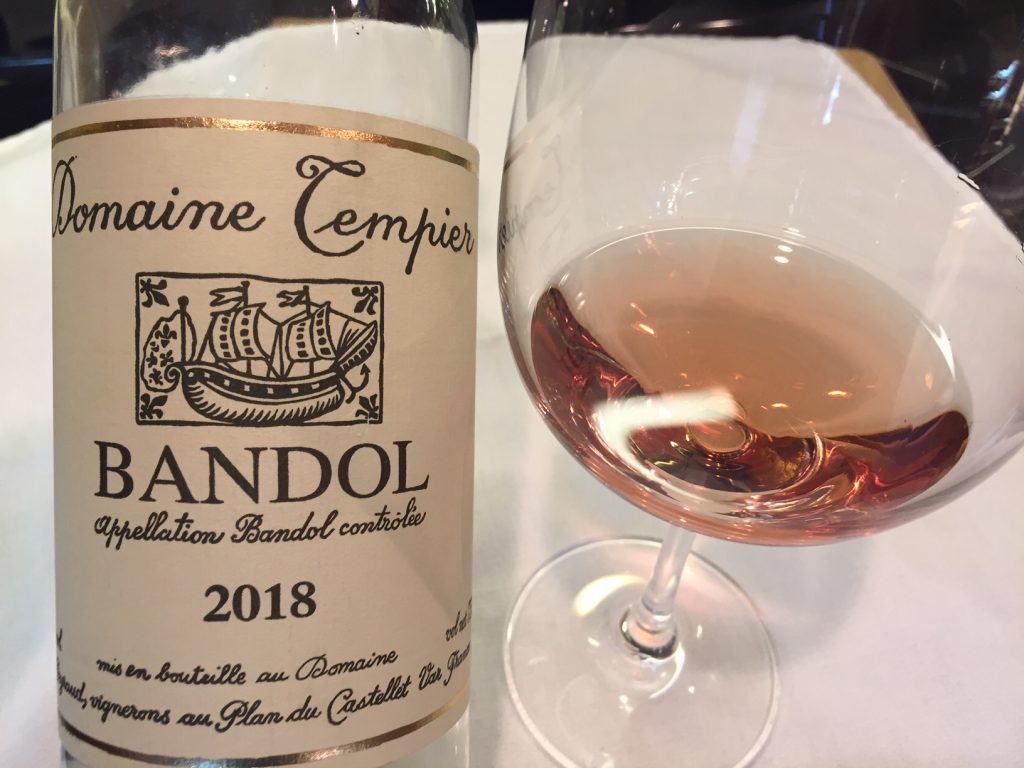
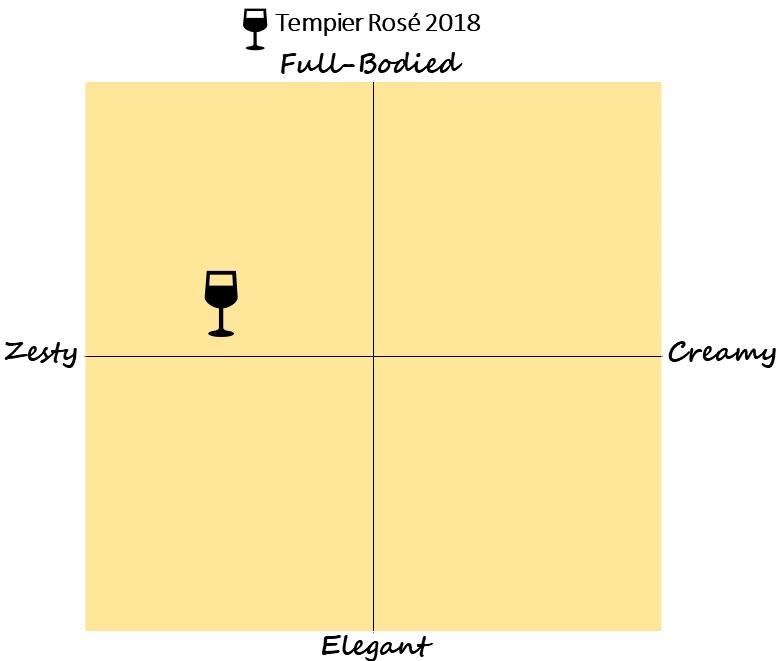
For red wine lovers, the wine pairing must deliver similar characteristics: sufficient acidity, fruit freshness and very low tannins. We think the Gamay wines from the Beaujolais region of France smartly satisfy.
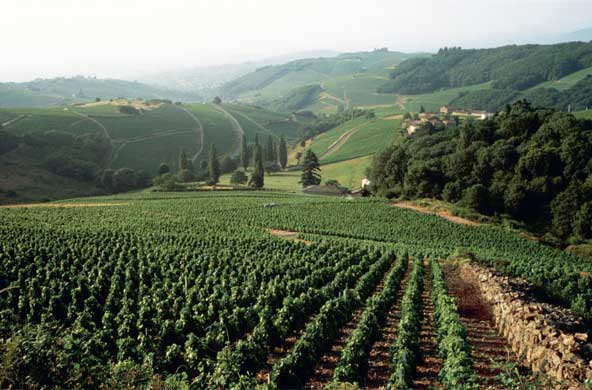
We favor the wines from the 10 Cru AOCs of Beaujolais, and for this pairing, we recommend the exquisite Domaine Jean Foillard Fleurie ($50 for the 2018 vintage). Wines from the Fleurie AOC (the name is attributed to a Roman Legionnaire) are the most elegant and floral of the Crus of Beaujolais. Organically farmed over pink sandstone, Foillard’s Gamay grapes deliver sweet aromas of peony, violet and rose from the glass, while the palate is alive with rich red fruits and freshness. Fleurie tends to be the most expensive of the Cru Beaujolais, but some lower priced alternatives to Foillard exist: J-L Dutraive (also organic) for $45 and Coudert Pere for $31.
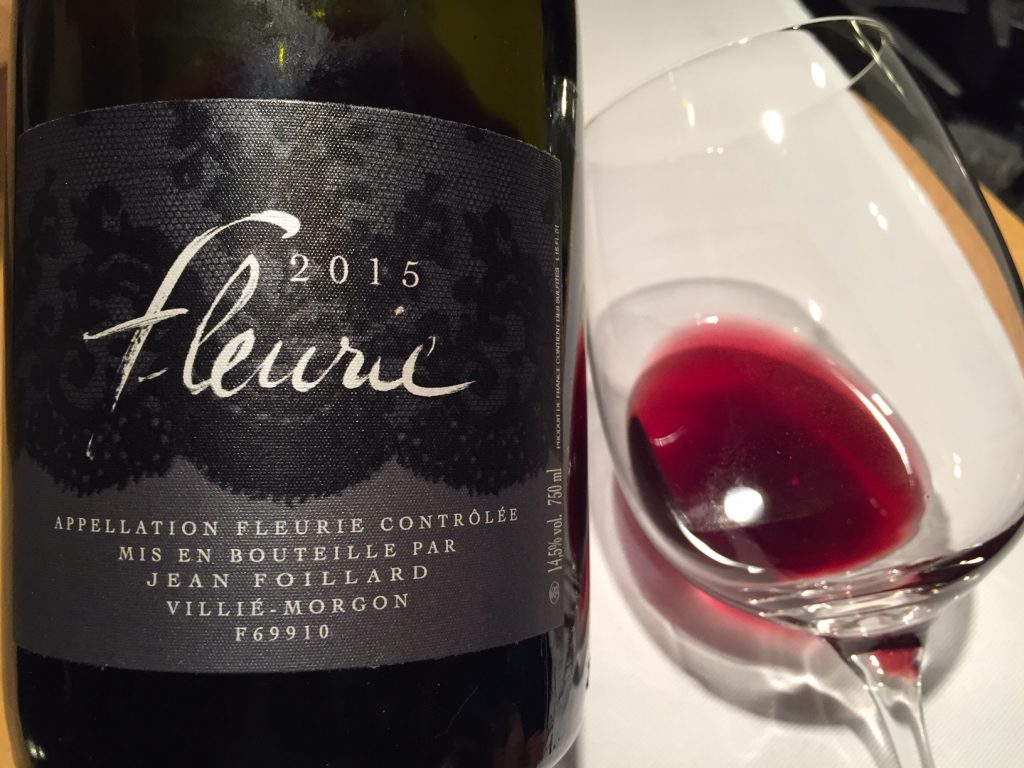
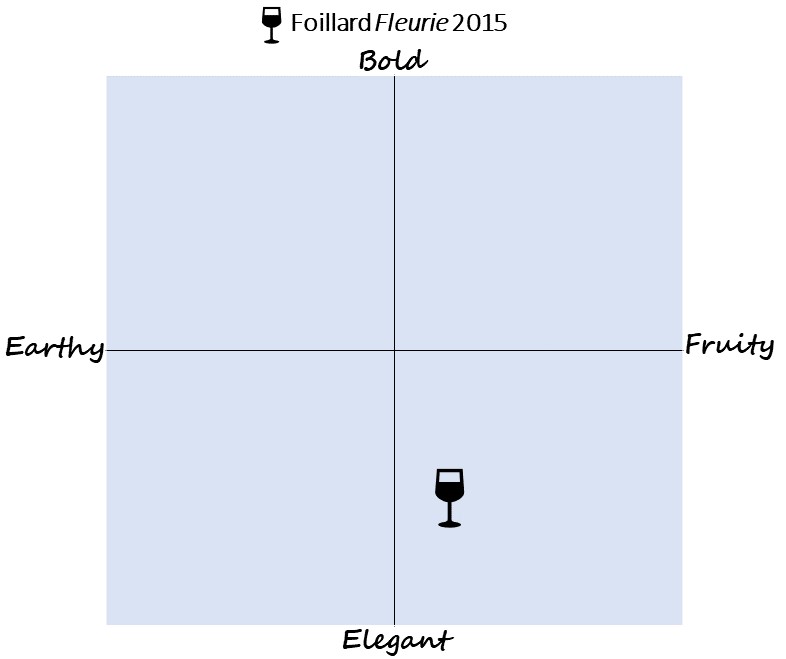
Hone your pasta skills by giving Cacio e Pepe a try. And pair this excellent dish with either of the two recommended wines. How simple is that?
Notes
The amount of cheese and pepper used in this dish is based on our tastes. Feel free to adjust according to your preferences. We do not feel this dish should be as creamy as Fettuccine Alfredo. We prefer it to be a bit lighter in style. Enjoy!
.
Ingredients
- 3/4 lb. Dried Pasta (spaghetti, linguine or bucatini)
- 1 Tbsp. unsalted butter (optional)
- 1 Tbsp. heavy cream (optional)
- 1 cup grated Pecorino Romano + 2 Tbsp. for garnish
- 1-1/2 tsp. medium-grind fresh black pepper
- 1/2 cup of hot pasta water
Instructions
- Bring a pot of salted water to boil.
- If you choose to use these non-traditional ingredients, melt the butter with the heavy cream in a small saucepan and set aside.
- Cook the pasta in the boiling water according to the maker’s instructions. Reserve 1/2 cup of the starchy, hot pasta water.
- When the pasta is cooked to your liking, drain it in a colander but do not rinse.
- Return the pasta to the empty, hot pasta pot, turn on a very low heat under the pot, and pour in the melted butter and cream, if using. Stir and toss to distribute.
- Add one-half of the grated cheese and one-half of the ground pepper. Stir and toss to combine, adding some of the hot pasta water.
- Add the balance of the grated cheese, pepper and some pasta water if needed. Stir and toss.
- The sauce should cling to the pasta and be lightly creamy, not watery.
- Plate and top with grated cheese and a sprinkling of pepper if desired. Note that you should not need to salt the finished dish in view of the salty pasta water as well as the salty cheese.

Thomas Lansen says
Great recipe and wines, Steve and Trish
Steven says
Thanks, Tom. We have been holed up in VT for the past 5 months, but safe and secure. Hope you and Tara are as well.
crynning says
What a fabulous article, Steven! I’m salivating right now with the recipe! Last fall I visited Domaine Tempier in Bandol and had their rose – now I wish I had purchased the bottle because I’d definitely pair it with this wonderful dish. (But I’ll have to find it here in Chicago) And you must know how much I love the wines from Fleurie, too – Oh, Beaujolais!!! Thank you for the inspiration!
Steven says
Thanks for commenting, Cindy. Seems like we’re seeing eye-to-eye on our wine preferences! Really enjoying your “Crush On This” YouTube episodes. Keep up the great work.
Tom Ortwein says
Such precision! The photos are as amazing as the descriptions. I’d vote red.
Steven says
Thanks for commenting, Tom. I’ve recorded your vote. Note that Richard’s vote was neither red nor white. It was “Yes!”
Lost says
Cacio E Pepe does not include cream or butter. This is not Cacio E Pepe.
Your pairing of wines would change considerably when sampled with an authentic recipe.
Pasta
Black Pepper
Peccorino Romano
Water (salt to boil)
That is all
Steven says
Thank you for commenting. Yes, you are correct in your listing of the authentic ingredients of Cacio e Pepe. But I was very clear that I was deviating from tradition, and I specifically mentioned that tradition excluded the butter & cream. As to the wine pairing, the principal drivers of the wine pairing are the pecorino and the black pepper. None of my additions matter as to the wine pairing; so I stand firm with my pairing recommendation regardless of how the C e P is made.
Joseph Brescio says
Butter and cream are not ingredients of Casio e Pepe!
Steven says
Thanks for your comment, Joseph. And you are correct that they are not ingredients in the original recipe, probably because the Italian shepherds didn’t have the ability to preserve those ingredients. I was very clear in my post that my approach was NOT traditional, and that purists would be unhappy. My intent with the tiny additions of butter & cream was to improve the reproducibility of a perfectly creamy texture. That said, I will add the word “Optional” to those recipe ingredients.
Mark Stonefrost says
Never saw a fat shepherd. Are you substituting butter & cream for some cheese / oil ?
Steven says
Thanks for commenting, Mark, and apologies for the delay in replying. I had not thought of the butter and cream as a substitute, but perhaps you’re right. The amounts are so small relative to the size of the recipe – 1 Tbsp each; I think of them as simply “aids” to a better finished product.